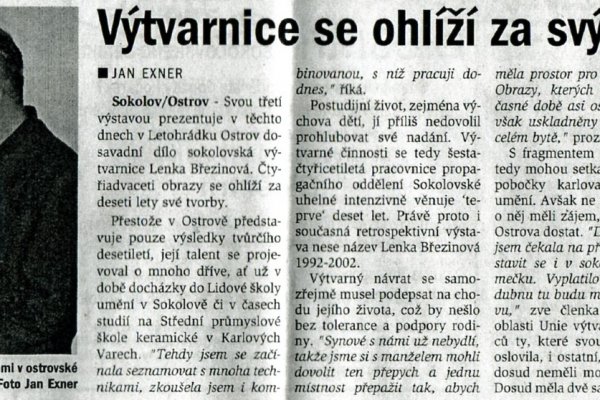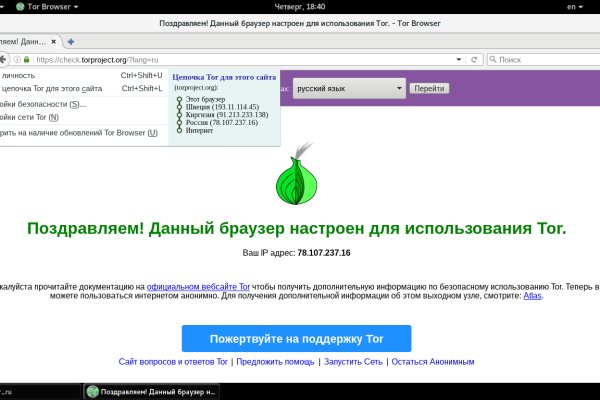2krn cc кракен
Что можно купить на Гидре Если кратко всевозможные запрещенные товары. Форумы. Читайте также: Очистка мака от ненужных файлов. Этот сайт содержит 2 исходящих ссылок. Это защитит вашу учетную запись от взлома. Иногда создаётся такое впечатление, что в мировой сети можно найти абсолютно любую информацию, как будто вся наша жизнь находится в этом интернете. В бесплатной версии приложения доступно всего 500 мегабайт трафика в месяц, а годовой безлимит обойдется в 979 рублей (и это только цена для устройств на iOS). У Вас есть сайт? И так, несколько советов по фильтрации для нужного вам товара. Основной валютой на рынке является bit coin. Данное количество может быть как гарантия от магазина. Потребитель не всегда находит товар по причине того что он пожалел своих денег и приобрел товар у малоизвестного, не проверенного продавца, либо же, что не редко встречается, попросту был не внимательным при поиске своего кракен клада. Причем он не просто недоступен, а отключен в принципе. Робот? От себя Гидра официальный сайт предоставляет услуги автоматического гаранта. Известны под названиями Deepweb, Darknet. Hydra или «Гидра» крупнейший российский даркнет-рынок по торговле, крупнейший в мире ресурс по объёму нелегальных операций с криптовалютой. Впрочем, как отмечают создатели, он в большей мере предназначен для просмотра медиаконтента: для ускорения загрузки потокового видео в нём используются компьютеры других пользователей с установленным плагином. Функционал и интерфейс подобные, что и на прежней торговой площадке. Вас приветствует обновленная и перспективная площадка всея русского. Хорошей недели. Onion - Enot сервис одноразовых записок, уничтожаются после просмотра. Небольшой список.onion сайтов в сети Tor. Russian Anonymous Marketplace один из крупнейших русскоязычных теневых форумов и анонимная торговая. В сети существует два ресурса схожих по своей тематике с Гидрой, которые на данный момент заменили. Есть три способа обмена. Org в луковой сети. Hbooruahi4zr2h73.onion - Hiddenbooru Коллекция картинок по типу Danbooru. Вся ответственность за сохранность ваших денег лежит только на вас. Кардинг / Хаккинг Кардинг / Хаккинг wwhclublci77vnbi. Searchl57jlgob74.onion/ - Fess, поисковик по даркнету. Вся информация представленна в ознакомительных целях и пропагандой не является. После того как вы его скачаете и установите достаточно darkmarket будет просто в поисковой строке вбить поисковой запрос на вход в Hydra. Небольшой список.onion сайтов в сети Tor. Данное количество может быть как гарантия от магазина. Мегастрой.

2krn cc кракен - Krakin12 at
Сайт разрабатывался программистами более года и работает с 2015 года по сегодняшний день, без единой удачной попытки взлома, кражи личной информации либо бюджета пользователей. Источник p?titleМега сеть_торговых_центров) oldid. Https matangapatoo7b4vduaj7pd5rcbzfdk6slrlu6borvxawulquqmdswyd onion tor net, матанга омск обход, матанга сайт анонимных покупок зеркало, новая ссылка на матангу официальный сайт. Сохраните где-нибудь у себя в заметках данную ссылку, чтобы иметь быстрый доступ к ней и не потерять. Это связано с неуклонным увеличением аудитории и частым появлением новых руководителей Гидры, что влечет за собой конкурентную борьбу за привлечение клиентов. Интересно, а есть ли? Скейт-парки: адреса на карте, телефоны, часы работы, отзывы, фото, поиск. Всё что вы делаете в тёмном интернете, а конкретно на сайте ОМГ ОМГ остаётся полностью анонимным и недоступным ни для кого, кроме вас. Программа hydra поддерживает огромное количество служб, благодаря своей быстроте и надёжности она завоевала заслуженную признательность среди тестеров. Это попросту не возможно. Бот для Поиска @Mus164_bot corporation Внимание, канал несёт исключительно музыкальный характер и как место размещения рекламы! Единственное "но" хотелось бы больше способов оплаты. Всегда свежая на! Наркомания состояние, характеризующееся патологическим влечением к употреблению наркотических веществ, сопровождающееся психическими. Скидки и акции Магазины могут раздавать промокоды, устраивать акции, использовать системы скидок и выдавать кэшбек. Скейтпарки: адреса на карте, телефоны, часы работы, отзывы, фото, поиск. Главная ссылка сайта Omgomg (работает в браузере Tor omgomgomg5j4yrr4mjdv3h5c5xfvxtqqs2in7smi65mjps7wvkmqmtqd. Мега Нижний Новгород Нижегородская область, Кстовский район,. Дождались, наконец-то закрыли всем известный сайт. Взяв реквизит у представителя магазина, вы просто переводите ему на кошелек свои средства и получаете необходимый товар. Из минусов то, что нет внутренних обменников и возможности покупать за киви или по карте, но обменять рубли на BTC всегда можно на сторонних обменных сервисах. Ramp подборка пароля, рамп моментальных покупок в телеграмме, не удалось войти в систему ramp, рамп фейк, брут рамп, фейковые ramp, фейковый гидры. Hydra русскоязычная торговая площадка в сети, признанная крупнейшим маркетплейсом даркнета. Администрация портала OMG! Наша матанга http matangapatoo7b4vduaj7pd5rcbzfdk6slrlu6borvxawulquqmdswyd onion market 6688, matanga union ссылка тор matanga2planet com, matanga matanga2original. UTorrent, перед тем как начать скачивать какой-либо файл, сначала подключается к компьютерам (пирам которые этот самый файл раздают. До этого на одни фэйки натыкался, невозможно ссылку найти было. Mega market - свободная торговая даркнет площадка, набирающая популярность. Мега Ростов-на-Дону Ростовская область, Аксай, Аксайский проспект,. RAM TRX 2021 - Автосалон Ramtruck. Здесь представлены ссылки и зеркала, после блокировки оригинального. Таким образом, тёмный мир интернета изолируется от светлого. Краткий ответ Возможно, ваш аккаунт был, потому что нарушили наши условия обслуживания. Пирролидиновалерофенон, сокращённо α-, от англ. Для покупки этой основной валюты, прямо на сайте встроенные штатные обменные пункты, где вы можете обменять свои рубли на bit coin. Мужская, женская и детская одежда по низким ценам. Здесь давно бродит местный абориген, который совсем не похож. Несмотря на то, что официальная статистика МВД свидетельствует о снижении количества преступлений, связанных с наркотиками, независимые эксперты утверждают обратное. Медицинские. Доступ к darknet market с телефона или ПК давно уже не новость. Где теперь покупать, если Гидру закрыли? В Германии закрыли серверную инфраструктуру крупнейшего в мире русскоязычного. Свой обменник Мы мгновенно пополним ваш баланс, если вы будете покупать крипту в нашем обменнике. Ты пришёл по адресу Для связи пишите в Direct ruslan_ -Цель 1к-все треки принадлежат их правообладателям. Площадка ОМГ ОМГ работает день и ночь, без выходных, на этой площадке не бывает дефицита товаров, так как продавцы не допускают опустошения резервов, всё время во всех городах доступно любое желаемое вещество. Она специализировалась на продаже наркотиков и другого криминала.

ОМГ магазин в онион - даркмаркет нового поколения, работает на огромной территории всего бывшего СССР, на данный момент плотно "заселены" дилерами всех районов Российской Федерации, доступен 24 часа в сутки, 7 дней в неделю, круглосуточная онлайн-поддержка, авто-гарант, автоматические продажи за Киви или биткоин.Ссылка - Зеркало для браузеров без Tor соедененияВнимание! Существует куча мошеннических площадок сделанных на домене onion, у настоящего сайта после omgruzxpnew4af идёт слово onion, внимательно проверяйте адрес магазина.Давайте разберем внимательно, что за необычный исполин о трёх головах:Встречают часто по одёжке, те времена когда магазины в даркнете были простыми давно прошли, omg онион говорит нам Wellcome дорогим минималистическим дизайном, видна огромная работа, каждый пиксель выверен. Функционал предоставлен чудовищный, здесь есть все - регистрация, валюта btc/рубль, товары, магазины, возможность создания приватных сообщений, удобная строка поиска с возможностью выбора своего региона. Главная страница нас встречает огромным списком безопасных магазинов, проверенных временем, в самом низу страницы можно найти раздел новостей, куда ежедневно выкладывают последние новостные сводки, конечно не такие интересные как тут :).По заявлению администрации ОМГ тор, сайт полностью написан с нуля, что даёт гарантию отсутствия частых уязвимостей в коде, насколько известно нам код писался omg onion сайта не менее года, "драгмаркет" работает с 2015 года, никаких новостей об утечке данных, взломе, краж биткоинов за все время не было, из чего имеем полное право сделать вывод, что магазин безопасен.Дальше под нашим микроскопом будет рассмотрен весь волшебный зверь, но давайте о главном, то что действительно важно для любого пользователя и потенциального покупателя. Очень важно - товар и цены, сказать, что на Гидре разный товар, это ничего не сказать, в продаже разномастные документы на все случаи жизни ОСАГО, акцизные марки табака и алкоголя, водительские удостоверения разнообразных стран, дипломы высшего образования, получение гражданства Украины или Молдовы, дебетовые карты всевозможных банков, сим-карты операторов связи России, Азии, Европы, флешки с безопасными ОС, схемы заработка, и конечно различные психо-активные вещества, марихуана, амфетамин, героин, бошки, гашиш, a-pvp, mdvp, экстази, грибы, марки, кокаин, мефедрон, полный список смотрите сами на сайте магазина.Ценовая политика, нам хотелось бы упомянуть, что цены на ОМГ тор копеечные и всё раздают почти даром, но это не так. Как известно в наш век, хороший товар - хорошо стоит, и можно было бы испугаться цен, которые были в самом начале, но рыночная экономика сыграла злую шутку, и новые барыги (новые продавцы), чтобы заполучить приток покупателей к себе, стали снижать цены на товар до минимальных, тем самым начиная демпинговать, принуждая других игроков рынка со временем также снижать стоимость, так как вечно получать сверхприбыль нельзя. На данный момент, ценники по всем товарам стали вполне сносными, но учитывая постоянный рост аудитории и геометрически увеличивающиеся количество новых голов Гидры, цены в будущем ожидают корректировку, скорее всего рынок будет диктовать правила снижения цен, для более интересной, конкуретной борьбы за продажи. Для безопасности покупателей работает система авто-гаранта, как это выглядит? Любая сделка проходящая в магазине, автоматически "страхуется", в случае спорных ситуаций к беседе присоединяется администратор. Из полезностей - моментальные покупки, возможность быстро купить выбранный товар, без ожидания подтверждения транзакции в blockchain, что очень удобно, так как транзакция может подтверждаться и через сутки, оплата в битках и киви, как в старые добрые времена легко, пополнить баланс сайта можно даже через Сбербанк! Разумеется доступен предзаказ, но здесь уже лучше обговаривать нюансы с продавцом. По заявлению администрации все продавцы проходят проверку, т.е. все представленные магазины 100% не обманщики, что само собой разумеется, так как бесплатно на торговой площадке никого размещать не будут, кроме этого администрация проверяет качество работы магазинов контрольными закупками. В систему встроен мессенджер, аналог ватсапа, у которого даже есть хештеги, ещё бы лайки приделали :), распределение на группы, приватные беседы и многое другое, нам кажется данный функционал намного полезен продажникам для становления "корпоративной" сети. Более всего радует система технической поддержки, которая работает в режиме реального времени, в чат можно пригласить админа, для разрешения практически любой конфликтной ситуации, даже в праздники отвечают довольно быстро, мы проверяли под новый год, как только модератор принял решение, всем участникам беседы приходит об этом сообщение. =) Внутри торговой площадки большой функционал, система самосжигающихся записок, отзывы покупателей о всех продавцах, система рейтинга, десятибальная шкала оценки магазинов, возможность оставления отзывов после каждой покупки, общий рейтинг продавцов, рейтинг покупателей, отображается количество успешных сделок совершённых продавцом и т.д. и т.п.Вывод.omg onion в правду огромный исполин о трёх головах, направленность которого крайне трудно предугадать, у данного сайта нет определённой аудитории, он охватывает все сферы теневого бизнеса, от продаж ПАВ до торговли документами и банковскими картами, география и объём можно сравнить разве что с Avito, который известен каждому пользователю обычного интернета. Естественно такой огроменный супермаркет в онионе ярко выделяется и сильно заметен, он манит разносторонную публику и, вполне вероятно, именно этот соблазн всего и вся может сыграть злую шутку, но ведь для этого у Гидры на каждое дело своя голова, отрубишь одну вырастут две, как известно, на текущий момент это лидер рынка, за что и занимает первую строчку нашего рейтинга. Что ещё сказать?Сейчас ОМГ крайне популярна в сети, у неё даже появились зеркала, например, сайты предоставляют своим посетителям быстрый вход на сайт магазина. Проект ОМГ в тор расположен, обязательно проверяйте адрес ссылки куда заходите, вот 100% рабочая и верная ссылка.Что то как то слишком грамотно получилось, такое даже у вас ощущение, что статья скорее всего заказная, слишком всё хорошо не бывает, ложка дёгтя должна где то быть, и ложка дёгтя заключается в том, что проект молодой, крайне амбициозный, сайту менее двух лет, хоть он и развивается мелкими шагами, но что будет в будущем покажет только время.

Вы используете устаревший браузер. Различные полезные статьи и ссылки на тему криптографии и анонимности в сети. 3 Как войти на Mega через iOS. Цели взлома грубой силой. Крупнейшая онлайн-площадка по продаже наркотиков прекратила свою. Если чуть привыкнуть. Onion - Freedom Chan Свободный чан с возможностью создания своих досок rekt5jo5nuuadbie. Связь доступна только внутри сервера RuTor. Вот и пришло время приступить к самому интересному поговорить о том, как же совершить покупку на сайте Меге. Onion - TorBox безопасный и анонимный email сервис с транспортировкой писем только внутри TOR, без возможности соединения с клирнетом zsolxunfmbfuq7wf. Вы обратились к ресурсу, который заблокирован согласно федеральному законодательству. Различные тематики, в основном про дипвеб. Мета Содержание content-type text/html;charsetUTF-8 generator 22 charset UTF-8 Похожие сайты Эти веб-сайты относятся к одной или нескольким категориям, близким по тематике. ( зеркала и аналоги сайта The Hidden Wiki) Сайты со списками ссылок Tor ( зеркала и аналоги The Hidden Wiki) torlinkbgs6aabns. Всегда свежая ОМГ! Onion - Схоронил! . Onion - MultiVPN платный vpn-сервис, по их заявлению не ведущий логов. Пользуйтесь, и не забывайте о том что, на просторах тёмного интернета орудуют ссылка тысячи злобных пиратов, жаждущих вашего золота. Предложение от конкурентов под названием hola! Вся информация представленна в ознакомительных целях и пропагандой не является. Она защищает сайт Mega от DDoS-атак, которые систематически осуществляются.